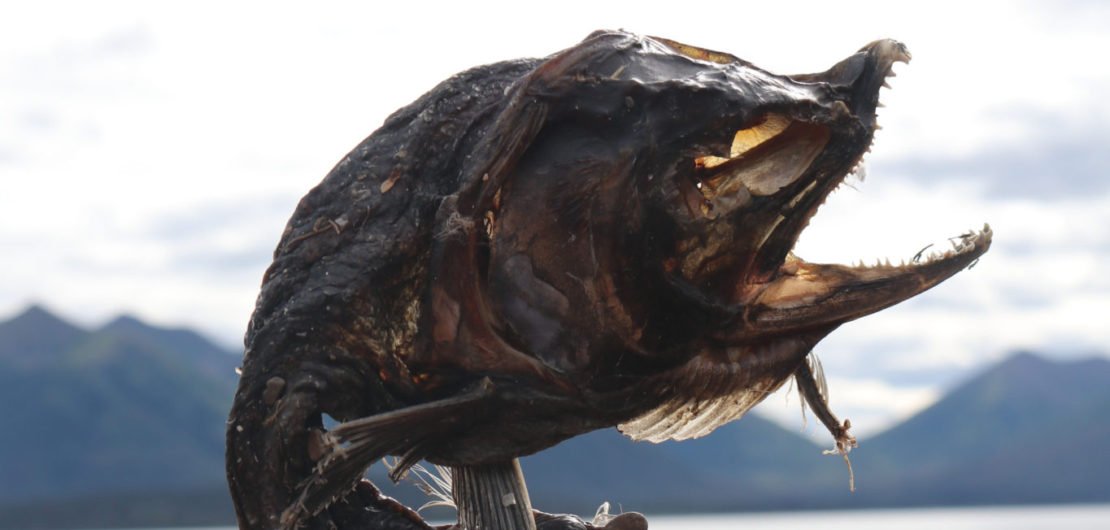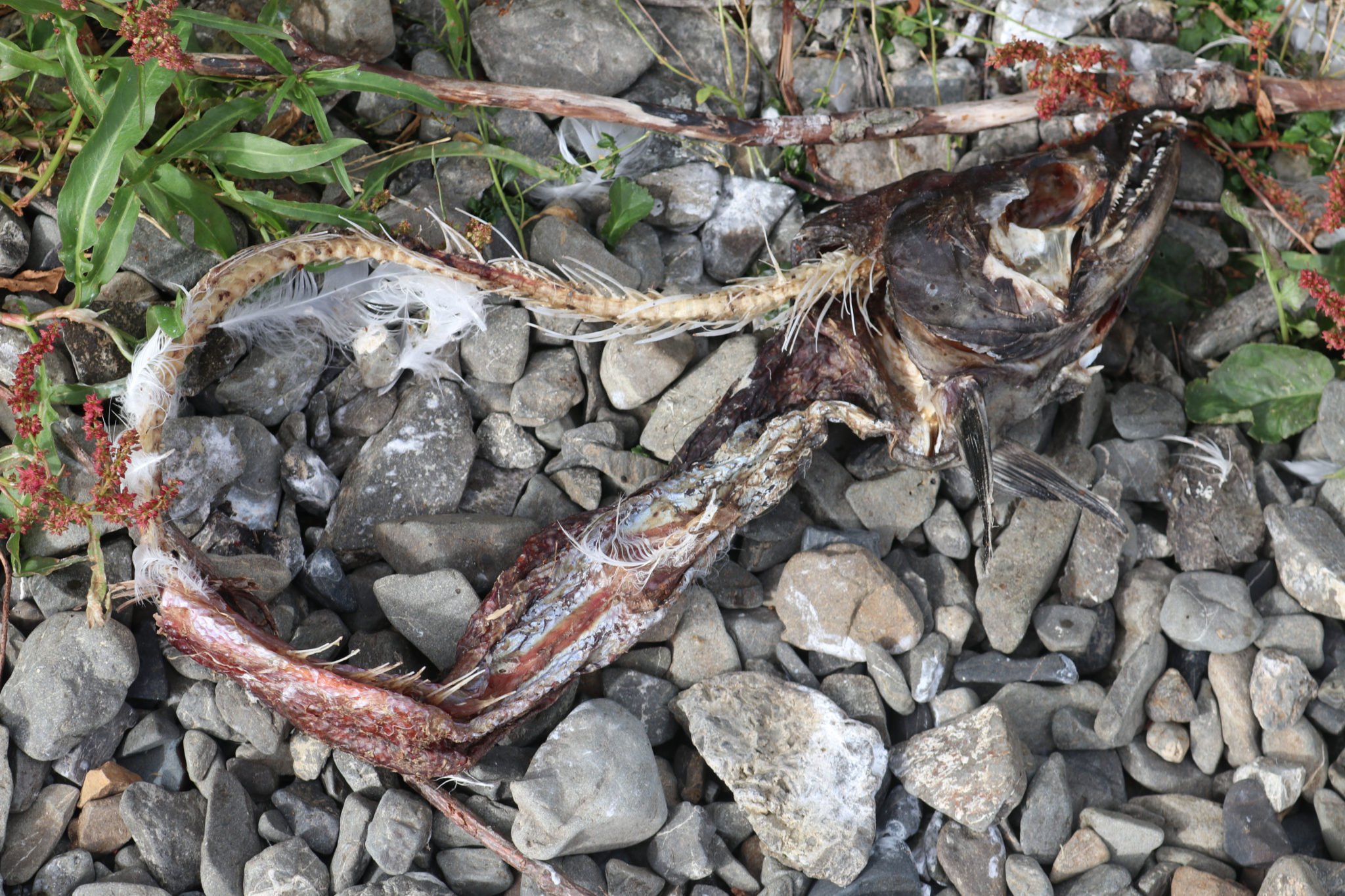“Surfing the salmon wave” in Bristol Bay
A dead sockeye salmon, dried in an interesting shape, in the Bristol Bay watershed on August 9, 2018. Mary Catharine Martin | SalmonState
By mid-August Bristol Bay’s river systems are choked with fish, but early July, when most of the bay’s sockeye salmon are fighting their way in from the sea, is another story. What’s a bear — or a grayling, trout or gull — to do?
The short answer is: start surfing.
Spawning sockeye salmon swim at Sam Creek, off Lake Nerka in the Bristol Bay watershed, on August 10, 2018. Mary Catharine Martin | SalmonState
The diversity within Bristol Bay’s landscapes and rivers means two salmon that arrive at the mouth of the same river system at roughly the same time might spawn weeks apart, depending on their ultimate destination. It’s a phenomenon researchers call the salmon wave — and the predators that follow the salmon are its surfers.
Colder streams’ salmon spawn first. Often, those streams are smaller. They hold relatively few fish, but, because of when those fish are available, are “disproportionately important” to the ecosystem as a whole, said University of Washington Professor of Aquatic and Fisheries Sciences Daniel Schindler, who’s been studying salmon in Bristol Bay’s Wood River watershed for two decades through the university’s Alaska Salmon Program.
A bear catches salmon at Middle Creek on Admiralty Island of Southeast Alaska on a recent year. Research from Bristol Bay and other Alaskan salmon strongholds shows that bears and other predators “surf the salmon wave,” moving from stream to stream depending on when the salmon are spawning. A diversity of spawning times depends in large part, on a diversity of habitat. Photo by Mary Catharine Martin | SalmonState
“A single salmon to a predator in the middle of July is way more important than a single salmon to that predator in the middle of August,” Schindler said. It can be easy to overlook the importance of tiny streams when developing, he said, but “it’s the network of sites that’s important for ecological function.”
After the colder streams, salmon whose natal streams are warmer spawn mid-August to September. Last of all in the Wood River system, salmon spawn on lake beaches starting in September. All of those spots have genetically distinct salmon populations. And throughout it all, bears and other predators “surf the salmon wave,” moving from creek to creek to get salmon protein for the longest span of time possible — and bettering their chances of surviving to the next year.
At times, when bears eat salmon, they strip the skin from the spine to eat the fish. That’s what happened to this sockeye salmon in the Bristol Bay watershed. Mary Catharine Martin | SalmonState
High-grading
In times and places bears can find lots of salmon — like August in Bristol Bay — they tend to high-grade for the most nutritious parts, frequently eating just the brains of the males (which are big and fatty) and the eggs from the females.
“Out here, in a typical small stream, (predators) aren’t limited by how much salmon is available — they’re limited by their ability to process it,” Schindler said.
In the spring, in contrast, a person walking along a riverbank might see bear scat full of the backbones of salmon. Bears have found and eaten the old, dried up carcasses, so the “salmon wave” can last through the spring, even if live salmon don’t.
Sockeye salmon swim at the mouth of C Creek, off Little Togiak Lake in the Bristol Bay watershed, on August 8, 2018. Mary Catharine Martin | SalmonState
In some places in Alaska, Schindler said, fish spawn from mid-May all the way to February — though, of course, in far-reduced numbers outside the main spawning months. Bears and other predators surf those salmon waves, too.
Climate, and the way it’s changing, also matters. Steep streams tend to be cooler because they’re getting snowmelt. Snow cools them for less time following dry winters than snowy winters, which means more streams across the river basin are similar temperatures. This has the potential to shorten the duration of the “salmon wave.” Mountainous, glacier-filled landscapes like Southeast Alaska can offer even more complexity of habitat than a place like Bristol Bay, which has an effect on those that prey on salmon. The hypothesis of a paper Schindler and former PhD student Jonny Armstrong — now assistant professor at Oregon State University’s Fish and Wildlife Department — are talking about is that places with the most “geomorphic and hydromorphic complexity” (the most diversity of land and water) have the biggest bears.
This summer was a stellar one for Bristol Bay, with a record return of more than 62 million sockeye salmon to the entire region by Aug. 2 and more than 7.5 million making it up the Wood River system alone. In addition to sheer abundance, however, what’s equally important to a system’s overall reliability for salmon-eaters, humans included, “is the diversity of salmon that come back to watersheds,” Schindler said. “And that diversity is produced by habitat diversity.”





